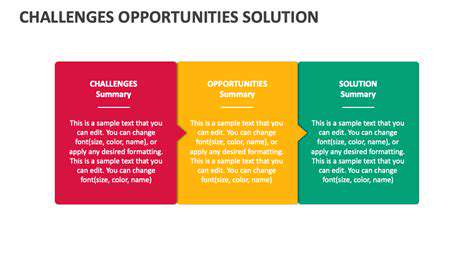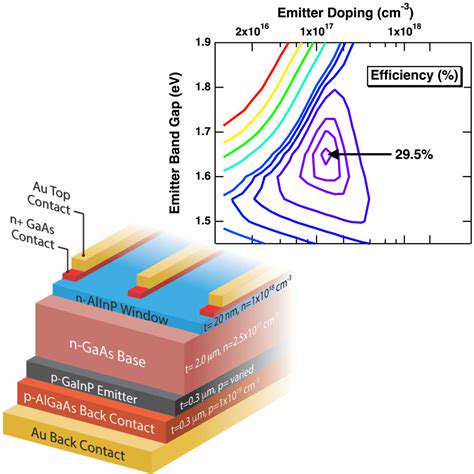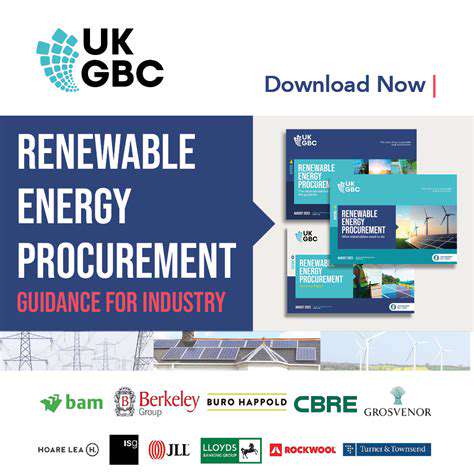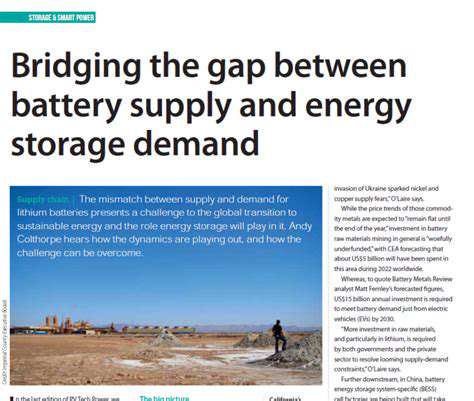Long Duration Energy Storage Solutions: From Concept to Reality
Government policies and supportive infrastructure investments are essential for the widespread adoption of long-duration energy storage. Policies encouraging research, development, and deployment of LDES technologies, as well as supportive regulations for grid integration, are crucial. These initiatives will not only accelerate the transition to a sustainable energy future but also create a more resilient and stable energy grid for the benefit of all.
Infrastructure development, including the construction of new energy storage facilities and the modernization of existing grids, is essential to effectively integrate LDES into the energy system. These investments will facilitate the reliable and efficient delivery of clean energy to consumers.
Beyond Batteries: Exploring Alternative LDES Technologies
Beyond the Conventional: Supercapacitors
Supercapacitors, also known as ultracapacitors, represent a promising alternative to batteries for LDES applications. They store energy electrostatically, rather than chemically, leading to significantly faster charging and discharging rates. This rapid response time is crucial in applications demanding quick energy delivery, such as electric vehicles and renewable energy integration. Supercapacitors also boast a longer lifespan compared to some battery technologies, making them attractive for repeated charge-discharge cycles. A key advantage of supercapacitors is their ability to operate over a wide temperature range, making them more reliable in various environmental conditions.
However, supercapacitors typically have lower energy density compared to batteries, meaning they can store less energy for a given size and weight. This limitation might restrict their use in applications requiring substantial energy storage, although ongoing research is actively addressing this issue.
Flow Batteries: A Liquid-Based Solution
Flow batteries stand out as a unique LDES technology, storing energy chemically in separate liquid electrolytes. These electrolytes are pumped into and out of electrochemical cells, allowing for independent storage and power generation. This modular design offers flexibility in scaling up energy storage capacity simply by increasing the volume of the liquid electrolytes. Flow batteries exhibit excellent cycling stability, suitable for applications demanding repeated charge-discharge cycles, such as grid-scale energy storage.
A key benefit lies in their ability to maintain a high power output even at large energy storage capacities. Their inherent safety features, stemming from the liquid nature of the electrolytes, make them a relatively safe option compared to some other advanced LDES technologies.
Solid-State Batteries: A Potential Game Changer
Solid-state batteries are garnering significant attention as a potential game-changer in the LDES arena. Replacing the liquid electrolyte with a solid-state material offers enhanced safety, higher energy density, and potentially higher operating temperatures. This advancement could significantly improve the performance and longevity of energy storage systems.
While still in the developmental stages, solid-state batteries hold the promise of revolutionizing LDES by mitigating safety concerns and boosting efficiency. Overcoming current challenges related to material science and manufacturing will be crucial for their widespread adoption.
Hydrogen Storage: A Sustainable Alternative
Hydrogen storage, utilizing hydrogen as an energy carrier, presents a sustainable alternative for long-duration energy storage. Hydrogen can be produced from renewable energy sources, making it a potentially carbon-neutral option for LDES. Storing hydrogen, however, poses significant challenges, requiring specialized technologies like cryogenic storage or high-pressure tanks. These methods can impact the overall efficiency and cost-effectiveness of the system.
Despite the hurdles, hydrogen storage has the potential to play a critical role in transitioning towards a sustainable energy future, particularly for applications demanding high energy density and long-term storage.
Thermal Energy Storage: Harnessing Heat
Thermal energy storage (TES) utilizes sensible or latent heat to store energy. This approach is well-suited for applications requiring high-temperature energy storage, such as solar thermal power plants and industrial processes. TES systems can store thermal energy for later use, smoothing out fluctuations in energy supply and demand. While not directly involved in electrical energy storage, TES systems can contribute to a more balanced and efficient energy grid by providing thermal energy as needed.
TES technologies offer a diverse range of materials and designs, from molten salts to phase-change materials. The choice of material depends on the specific application and required temperature ranges.
Hybrid Approaches: Combining Technologies
Combining different LDES technologies in a hybrid system can create solutions that leverage the strengths of each component. For example, a hybrid system could integrate a flow battery for long-duration storage with a supercapacitor for short-term power delivery. This approach can optimize the performance of the overall system, addressing specific needs for different applications. Such a strategy allows for a more customized and robust energy storage solution.
By strategically combining technologies, engineers can create LDES systems that outperform individual technologies in terms of cost-effectiveness, energy density, and power delivery characteristics.
Compressed Air Energy Storage (CAES): Harnessing the Power of Pressure
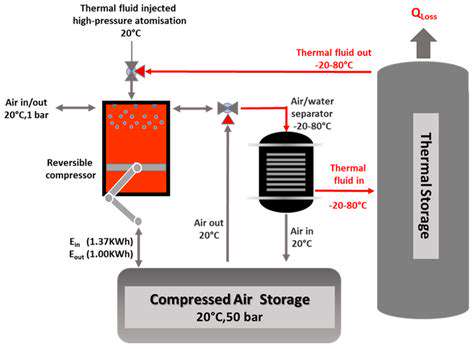
Compressed Air Energy Storage (CAES) Technology
Compressed Air Energy Storage (CAES) is a promising technology for storing energy from renewable sources, like solar and wind power. It allows excess energy to be captured and stored for later use, helping to overcome the intermittency of these renewable sources. This stored energy can then be released as electricity when needed, ensuring a consistent power supply. This technology has the potential to significantly contribute to a more sustainable and reliable energy system. It is a mature technology, with several operational plants around the world, demonstrating its practical viability.
The basic principle behind CAES is straightforward: surplus electricity is used to compress air, which is then stored in underground caverns or depleted salt mines. When electricity demand is high, this compressed air is released and used to drive a turbine, generating electricity. This process is highly efficient, and the stored air can be retrieved and used repeatedly.
Types of CAES Systems
There are two primary types of CAES systems: conventional CAES and advanced CAES. Conventional systems typically use large, high-pressure air storage facilities. Advanced systems, on the other hand, are often smaller, and can be integrated with other renewable energy sources more easily, increasing the flexibility of energy systems.
Advanced CAES systems often utilize different technologies, such as hybrid systems combining compressed air with other storage methods, like pumped hydro. This allows for a more versatile energy storage solution.
Advantages of CAES
One significant advantage of CAES is its high energy storage capacity. The large volume of compressed air that can be stored allows for substantial energy storage, mitigating the unpredictable nature of renewable energy sources. This is a crucial factor in achieving grid stability and reliability.
Another key benefit is its long lifespan. CAES systems, when well-maintained, can operate for many decades, making them a cost-effective and sustainable long-term energy storage solution.
Furthermore, CAES systems can be integrated with existing power grids relatively easily, minimizing the need for extensive infrastructure upgrades. This makes it a relatively smooth transition to incorporate into existing energy systems.
Environmental Impact of CAES
While CAES generally has a lower environmental impact compared to other energy storage solutions, like batteries, there are still potential environmental considerations. Careful site selection is crucial to minimize any negative impact on local ecosystems. For example, the use of underground caverns or depleted mines can affect the environment if not carefully managed. A comprehensive environmental impact assessment is essential for every CAES project to ensure responsible development.
Economic Viability of CAES
The economic viability of CAES projects depends on several factors, including energy prices, government incentives, and the cost of technology. However, as the cost of renewable energy technologies continues to decrease, the economic attractiveness of CAES is also likely to increase. Furthermore, the reliability and stability that CAES provides to the grid can lead to significant cost savings in the long term. This could ultimately make CAES a more financially appealing investment for utilities and energy companies.
Thermal Energy Storage: Harnessing Heat for Long-Term Energy Retention
Understanding Thermal Energy Storage
Thermal energy storage (TES) is a crucial technology for managing and utilizing thermal energy over extended periods. It involves capturing and storing heat energy, which can then be released later as needed. This process is vital for various applications, from industrial processes to building heating and cooling systems, and even for large-scale energy storage solutions. Understanding the fundamental principles behind TES is key to appreciating its diverse potential.
Essentially, TES systems work by utilizing materials or systems that can absorb and release large quantities of heat. Different storage methods employ various techniques, from sensible heat storage using materials with high thermal capacity to latent heat storage using phase change materials. The optimal choice depends on the specific application and the required temperature range.
Types of Thermal Energy Storage Systems
Several types of TES systems are currently being developed and deployed, each with its own strengths and weaknesses. Sensible heat storage systems utilize materials with high thermal mass, like water or rocks, to absorb and release heat. This method is relatively simple and cost-effective but may require large storage volumes. Latent heat storage, on the other hand, uses phase change materials (PCMs) that absorb and release heat during a phase change, like melting or freezing. This method offers higher energy density compared to sensible heat storage, but PCMs can be more complex to implement.
Other advanced techniques include thermochemical storage, which involves chemical reactions to store and release heat, and integrated systems that combine several approaches for enhanced performance. The choice of storage method is crucial and depends on factors such as the desired temperature range, storage capacity, and cost effectiveness.
Applications in Various Sectors
Thermal energy storage has applications across a broad spectrum of industries. In buildings, TES can provide more efficient heating and cooling solutions, reducing reliance on peak energy demand. Industrial processes, such as steel production and chemical manufacturing, can utilize TES to optimize energy consumption and minimize fluctuations in energy demand. Furthermore, TES plays a significant role in grid stability by providing a buffer for renewable energy sources like solar and wind, which often have fluctuating output.
In transportation, TES is being explored for applications such as electric vehicle charging and autonomous fleet operations. The future of TES lies in these diverse applications, where it can contribute to a more sustainable and efficient energy landscape.
Benefits of Implementing Thermal Energy Storage
The implementation of thermal energy storage offers numerous benefits, including enhanced energy efficiency and reduced reliance on fossil fuels. By storing excess energy during periods of low demand, TES systems can help flatten energy demand curves, reducing strain on the electricity grid and potentially lowering energy costs. This is particularly important in the context of integrating intermittent renewable energy sources.
Furthermore, TES can improve the overall sustainability of energy systems by reducing reliance on peak demand power generation, which often involves less environmentally friendly methods. TES technology also unlocks opportunities for better energy management and potentially lowers overall energy costs over time.
Challenges and Future Research Directions
Despite the numerous benefits, challenges remain in the development and widespread adoption of thermal energy storage. Factors such as material selection, cost effectiveness, and system integration need further investigation. Researchers are actively exploring novel materials with improved thermal performance and durability, aiming to reduce the overall cost of TES systems. The development of more efficient storage systems and innovative design approaches is crucial.
Future research is also focusing on improving the scalability of TES systems for large-scale applications and integrating them seamlessly with existing infrastructure. Further research into optimizing storage materials and exploring novel storage methods is essential to unlock the full potential of TES technology and ensure its widespread implementation.
Economic and Environmental Impact
The economic and environmental impact of implementing thermal energy storage is substantial. Reduced reliance on fossil fuels translates to lower greenhouse gas emissions and a more sustainable energy future. While the initial investment for TES systems can be significant, the long-term cost savings and environmental benefits often outweigh the upfront costs. Ultimately, widespread adoption of TES can contribute to a more resilient and sustainable energy grid, promoting a cleaner and healthier environment for generations to come.
The economic benefits extend beyond reduced energy costs. The stability offered by TES to energy grids can attract investment in renewable energy sources and foster innovation in the energy sector. This positive feedback loop can lead to a more robust and efficient energy system, ultimately benefiting society as a whole.



